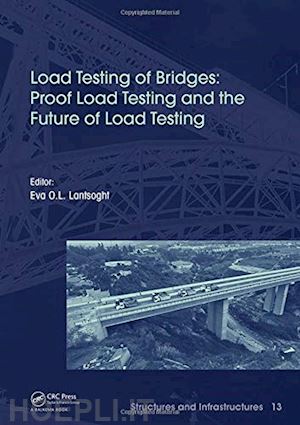Part I Proof Load Testing of Bridges Chapter 1 Methodology for Proof Load Testing Eva O. L. Lantsoght1.1 Introduction 1.2 Determination of target proof load 1.3 Procedures for proof load testing 1.4 Processing of proof load testing results 1.5 Bridge assessment based on proof load tests 1.6 Summary and conclusions References Chapter 2 Load Rating of Prestressed Concrete Bridges without Design Plans by Nondestructive Field Testing David V. Jauregui, Brad D. Weldon, and Carlos V. Aguilar2.1 Introduction 2.2 Inspection and evaluation procedures 2.3 Case studies 2.4 Conclusions References Chapter 3 Example of Proof Load Testing from Europe Eva O. L. Lantsoght, Dick A. Hordijk, Rutger T. Koekkoek, and Cor van der Veen3.1 Introduction to viaduct Zijlweg 3.2 Preparation of proof load test 3.3 Execution of proof load test 3.4 Post-processing and rating 3.5 Summary and conclusions Acknowledgments References Part II Testing of Buildings Chapter 4 Load Testing of Concrete Building Constructions Gregor Schacht, Guido Bolle, and Steffen Marx4.1 Historical development of load testing in Europe 4.2 Load testing of existing concrete building constructions 4.3 New developments 4.4 Practical recommendations 4.5 Summary and conclusions References Part III Advances in Measurement Techniques for Load Testing Chapter 5 Digital Image and Video-Based Measurements Mohamad Alipour, Ali Shariati, Thomas Schumacher, Devin K. Harris, and C. J. Riley5.1 Introduction 5.2 Digital image correlation (DIC) for deformation measurements 5.3 Eulerian virtual visual sensors (VVS) for natural frequency measurements 5.4 Recommendations for practice 5.5 Summary and conclusions 5.6 Outlook and future trends Acknowledgments References Chapter 6 Acoustic Emission Measurements for Load Testing Mohamed ElBatanouny, Rafal Anay, Marwa A. Abdelrahman, and Paul Ziehl6.1 Introduction 6.2 Acoustic emission–based damage identification 6.3 Source location during load tests 6.4 Discussion and recommendations for field applications References Chapter 7 Fiber Optics for Load Testing Joan R. Casas, António Barrias, Gerardo Rodriguez Gutiérrez, and Sergi Villalba7.1 Introduction 7.2 Distributed optical fibers in load testing 7.3 Conclusions Acknowledgments References Chapter 8 Deflection Measurement on Bridges by Radar Techniques Carmelo Gentile8.1 Introduction 8.2 Radar technology and the microwave interferometer 8.3 Accuracy and validation of the radar technique 8.4 Static and dynamic tests of a steel-composite bridge 8.5 A challenging application: structural health monitoring of stay cables 8.6 Summary Acknowledgments References Part IV Load Testing in the Framework of Reliability-Based Decision-Making and Bridge Management Decisions Chapter 9 Reliability-Based Analysis and Life-Cycle Management of Load Tests Dan M. Frangopol, David Y. Yang, Eva O. L. Lantsoght, and Raphael D. J. M. Steenbergen9.1 Introduction 9.2 Influence of load testing on reliability index 9.3 Required target load for updating reliability index 9.4 Systems reliability considerations 9.5 Life-cycle cost considerations 9.6 Summary and conclusions References Chapter 10 Determination of Remaining Service Life of Reinforced Concrete Bridge Structures in Corrosive Environments after Load Testing Dimitri V. Val and Mark G. Stewart10.1 Introduction 10.2 Deterioration of RC structures in corrosive environments 10.3 Reliability-based approach to structural assessment 10.4 Corrosion initiation modeling 10.5 Corrosion propagation modeling 10.6 Effect of spatial variability on corrosion initiation and propagation 10.7 Influence of climate change 10.8 Illustrative examples 10.9 Summary References Chapter 11 Load Testing as Part of Bridge Management in Sweden Lennart Elfgren, Bjorn Täljsten, and Thomas Blanksvärd11.1 Introduction 11.2 History 11.3 Present practice 11.4 Future 11.5 Conclusions Acknowledgments References Chapter 12 Load Testing as Part of Bridge Management in the Netherlands Ane de Boer12.1 Introduction 12.2 Overview of load tests on existing structures 12.3 Inspections and re-examination 12.4 Conclusions and outlook References Part V Conclusions and Outlook Chaper 13 Conclusions and Outlook Eva O. L. Lantsoght13.1 Current body of knowledge on load testing 13.2 Current research and open research questions 13.3 Conclusions and practical recommendations











